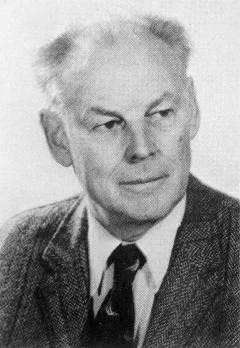Jane Jacobs, whose specialty is the death and life of cities, is not an economist. You won’t find much in her books about such things as the gross national product of separate countries, or the effects of monetary decisions of the Federal Reserve on national standards of living. Her latest work, Cities and the Wealth of Nations (New York: Random House, 257 pp., $17.95), tells us that the classical economists were guilty of putting the cart before the horse in their discussions about the origins and enhancement of wealth. In her view cities create wealth quite independently from their national settings. It follows that economic wisdom must begin with an investigation of city cultures.
What Jacobs explores in this book is a process that takes off from individual wills and personal ingenuities. Boston and the Boston region offer a prime example of such a process in dynamic continuity. The city, with its ties to Salem and the North Shore, had been a creative metropolis since the days of the tea packets. Later, it put its money into railroads. But its citizens lost their drive as the local third and fourth generation rich limited their energies to coupon clipping. As the Boston economy stagnated, it lost its exports (shoes and textiles) and ceased to import. The popular explanation was that cheaper labor and lower taxation in Georgia and elsewhere in the American South had made New England an economic backwater for good.
This explanation seemed entirely too defeatist to Ralph Flanders, who later became a U.S. Senator from Vermont. In 1946 Flanders and a few of his moneyed friends formed a venture capital company to make four million dollars available to small Boston enterprises. The Flanders group had no preconceived ideas of what they were doing. They were quite surprised when the first applicants for capital were three young scientists who, using their relatives’ savings, had started a high technology enterprise. The presence of universities such as Harvard, M.I.T., and Tufts guaranteed a willing personnel for the proliferation of high tech companies that followed, with the new enterprises moving out of Boston proper to take advantage of cheap rental space along the now fabled Route 128.
The Flanders group touched hands with the world of John Hancock. Looking back on Boston history, Jacobs says the creative city will begin by importing goods for processing and resale. But it will not stop there. To meet competition it will begin to duplicate the imported produces for itself. It will reach out to its own hinterland for manpower and for markets. State lines will mean little to it—the Boston region spills over into southern New Hampshire and into Maine.
What Jane Jacobs has a hard time explaining is why some city regions turn out to be Bostons and some do not. Tokyo, in Japan, has been a Pacific rim Boston, providing jobs for the sons of farmers from the surrounding countryside and selling products made from imported raw materials to the world. Scotland’s Edinburgh, on the other hand, has done little to rejuvenate itself. The displaced highlanders who came into the city when their lands were cleared for raising sheep had to find housing in slum quarters. Many of them died from tuberculosis. The more energetic among them moved on to London or migrated to Ulster in northern Ireland or Nova Scotia in Canada. Some joined the British army, serving notably in the conquest of India.
Query: would the story of Edinburgh have been different if there had been a Scottish Ralph Flanders?
Jacobs leaves us with the task of trying to puzzle out what it takes to set a Flanders in motion. Obviously a city setting is needed. But it can’t be just any city. The Lockheed Company built a factory in Marietta, Georgia. But it couldn’t have started out in a Georgia town that lacked mechanics and toolmakers. Allen Loughhead, the founder of the company, designed his first plane in Los Angeles in the late Twenties. He had to scramble for hundreds of things to make the plane—tools, wiring, wheel parts, beatings, aluminum sheets, printing services. Not everything was available locally, but there were people who could provide the needed items when specifications were set before them. Imports came first, then the local duplication of imports. Finally, when the company had become relatively self-sufficient, it could afford to build a plant in Georgia.
Jane Jacobs’ investigation of city-region patterns makes her doubt the use of providing regions with capital when they are far away from solvent city markets. She is particularly depressed by the example of the Volta Dam in Ghana. Volta, as one of the world’s great hydroelectric projects, was supposed to supply adjacent factories with power. But Ghana had no Ralph Flanderses or Allen Loughheads. The people displaced by the dam were forced to farm soil so poor that they could not feed their families. There are, says Jacobs, quoting a UN food and agricultural specialist, some 40 dams around the world that are useless.
Jacobs has nothing good to say about the supposed science of macro-economics, which she defines as “the branch of learning entrusted with the theory and practice of fostering national and international economies.” it is, she says, a shambles. The effort to act on macroeconomic recommendations has tied up incomprehensibly huge resources in the World Bank, the International Monetary Fund, and the UN. What has resulted has been a tremendous waste and a real wreckage of hopes. The reality of stagflation, she says, has made nonsense of two centuries of elaborate theoretical thought.
Jacobs concluded that economic life develops by innovating. It expands by the process of import-replacing. It follows that the politicos should stop taking money out of the pockets of prospective innovators, who should be left to their micro-economic concerns in their various cities. The innovator can always use capital, but a little of it will go a long way. A good idea will generate its own support, much as production under Say’s Law generates its own purchasing power.
Jane Jacobs ends her book with a crack at capital cities that are no more than that. Where they seem to boom, it is “in service to transactions of decline.” “Behind its busyness at ruling,” she says, “a capital city of a nation or an empire, vivacious to the last, at length reveals itself as being a surprisingly inert, backward, and pitiable place. So it was with Lisbon, Madrid, Istanbul. So it is gradually becoming, one suspects, with London, Paris, Stockholm . . .”
Since her last chapter is titled “Drift,” Jane Jacobs ends with pessimism. “Even creative cities such as Boston,” she says, “must depend on trade-offs from transactions of decline, at least in part. Boston . . . now depends partly on trade-offs from military production.” What we need is “many, many cities in a trading network” not dependent on the military, and that is something we just don’t have anymore.

